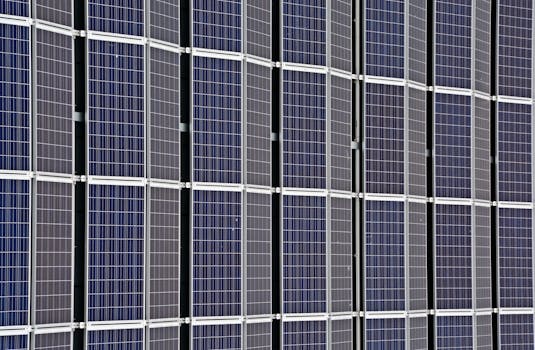
**
Delhi's Ambitious Plan: Solarizing the Munak Canal – A Giant Leap Towards Green Energy & Water Security
The Delhi government has announced an ambitious project to install solar panels along the Munak canal, transforming a crucial water infrastructure into a massive, floating solar power plant. This innovative initiative, aimed at bolstering Delhi's renewable energy capacity and enhancing water security, is poised to become a landmark project in India's green energy transition. The project, estimated to generate a significant amount of clean energy, marks a significant step towards achieving Delhi's ambitious renewable energy targets and reducing its carbon footprint. This initiative is expected to bring multiple benefits, addressing key concerns around clean energy production, water conservation, and sustainable development.
Harnessing Solar Power: A Detailed Look at the Munak Canal Solar Project
The Munak Canal, a vital lifeline supplying water to Delhi, spans hundreds of kilometers. The Delhi Jal Board (DJB) is leading this project, aiming to leverage the canal's vast expanse for solar power generation. The project involves deploying floating solar panels, also known as floatovoltaics, directly on the water's surface. This innovative approach maximizes land use efficiency, particularly crucial in a densely populated region like Delhi. The project's scale is unprecedented in India, making it a global showcase for large-scale floating solar technology.
Key Features and Expected Outcomes:
- Massive Power Generation: The project is anticipated to generate hundreds of megawatts of clean energy, significantly contributing to Delhi's electricity needs. This will reduce reliance on fossil fuels, thereby decreasing greenhouse gas emissions and air pollution.
- Water Evaporation Reduction: The floating solar panels are expected to reduce water evaporation from the canal, leading to improved water conservation. This is a significant advantage, particularly in a region facing water stress.
- Land Conservation: Utilizing the canal's surface eliminates the need for additional land for solar power plants, preserving valuable land for other uses. This addresses the land scarcity issue often associated with large-scale renewable energy projects.
- Reduced Transmission Losses: Generating power directly at the point of water usage minimizes transmission losses, making the system more efficient.
- Job Creation: The project will create numerous jobs during construction and operation, boosting local employment opportunities in manufacturing, installation, and maintenance.
- Improved Water Security: By reducing evaporation and improving water management, the project indirectly contributes to enhanced water security for Delhi.
Technological Advancements and Challenges
The project utilizes cutting-edge floating solar technology. These panels are designed to withstand the harsh environmental conditions, including temperature fluctuations and water exposure. The system incorporates advanced monitoring and control mechanisms to optimize energy production and ensure system reliability.
Despite the numerous advantages, the project faces several challenges:
- High Initial Investment: The initial investment for such a large-scale project is substantial, requiring significant funding and efficient project management.
- Environmental Impact Assessment: A thorough environmental impact assessment is crucial to ensure the project doesn't negatively affect the aquatic ecosystem of the canal. This involves carefully studying the impact on aquatic life and water quality.
- Maintenance and Operation: Long-term maintenance and operation of the floating solar panels require robust infrastructure and skilled personnel.
- Integration with the Grid: Seamless integration of the generated power into the existing Delhi electricity grid is crucial for optimal utilization.
Delhi's Commitment to Renewable Energy: A Broader Perspective
The Munak Canal solar project aligns perfectly with the Delhi government's broader commitment to renewable energy. The city has set ambitious targets to achieve a significant share of electricity from renewable sources in the coming years. This project is a significant step towards fulfilling these targets, demonstrating a proactive approach to combating climate change and ensuring energy security. The project is expected to serve as a model for other states facing similar challenges of water management and clean energy adoption.
Comparison with Other Floating Solar Projects Globally
While India has seen a growing number of floating solar projects, the Munak Canal project surpasses many in scale and ambition. Globally, several countries are experimenting with floatovoltaics, but the unique challenges of a project of this magnitude – the length of the canal, the water quality, and the integration with existing infrastructure – make it a truly significant undertaking.
Conclusion: A Sustainable Future for Delhi
The Munak Canal solar project represents a significant stride towards a sustainable future for Delhi. This innovative initiative not only tackles the crucial need for clean energy but also addresses water conservation concerns. The successful implementation of this project will not only benefit Delhi but also serve as a global benchmark for large-scale floating solar power projects, inspiring similar initiatives worldwide and accelerating the transition towards a cleaner, greener energy future. The project promises to be a significant contributor to India's efforts in achieving its renewable energy targets and reducing its carbon footprint, positioning Delhi as a leader in sustainable urban development. The project's long-term success depends on meticulous planning, careful execution, and robust maintenance, ensuring that it continues to contribute to Delhi's energy and water security for years to come. This initiative showcases the potential for innovative solutions to address multiple challenges simultaneously, creating a win-win situation for both energy production and water management.



















